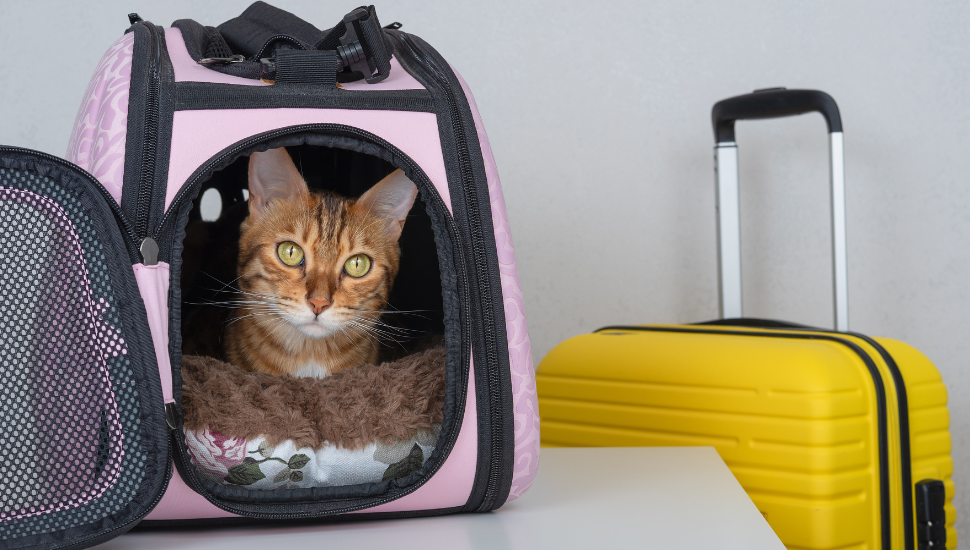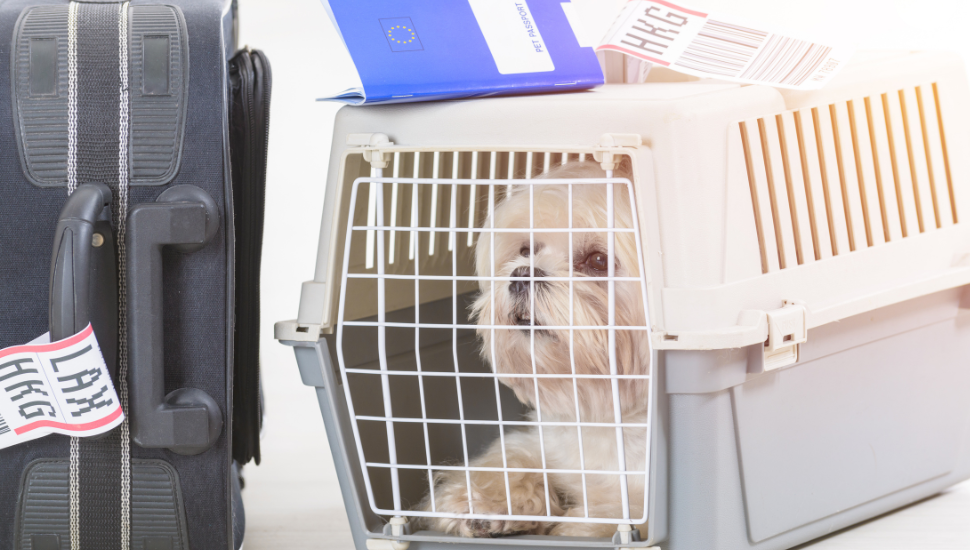10 Essential Tips for Travelling with Pets Abroad
Travelling with pets overseas requires careful advance planning. Read our tips.
Planning to take your pet on holiday? If so, there are a number of tasks you must complete before you can legally enter an EU country (or Northern Ireland).
Aside from the jabs and paperwork, travelling abroad with pets can be a challenge, both for you as its owner and for the animal. It's worth considering whether the pet really needs to travel – and if it might be better off staying with friends, family, or a facility like a kennel or cattery.
If you do decide to travel with your cat, dog, or other pet, the method and duration of travel will, of course, make a big difference: a few days driving around France will be less stressful than taking a flight further afield, which might require your pet to travel as cargo.
On the other hand, the company of your furry friend can make for a more pleasant trip and might help with travel anxiety – and even lower blood pressure and cholesterol.
Ensure your pet is microchipped
If you're holidaying with your pet within the European Union, you'll need to ensure they can be identified by an electronic chip. This must be done before, or at the same time as, getting their rabies vaccination. Getting your pet chipped after their rabies jab will mean they'll need to be vaccinated again.
Ensure the vet enters the microchip number on the animal health certificate.
EU-based airlines, train and ferry companies can read microchips conforming to the ISO 11784 standard. If your pet's chip does not meet these standards, you may need to bring your own microchip reader.

Get your pet a rabies vaccination at least 21 days before travel
A rabies vaccination is mandatory if you want to travel with your pet. At least 21 days must have elapsed since vaccination before travel can commence.
Pets that have been vaccinated for some time may need a booster shot (you can travel as soon as a booster is administered).
Obtain a pet travel document
Just like us humans, pets need a travel document in order to enter the EU.
Known as an animal health certificate, it must be signed by an ‘official veterinarian’ (OV). You'll need to show proof of your pet's microchipping date and vaccination history.
After the date of issue, the animal health certificate will be valid for 10 days for entry into the EU or Northern Ireland; 4 months for onward travel within the European Union after entry and for 4 months for re-entry into Great Britain.
Note: These certificates cannot be reused; you'll need to get a new animal health certificate for future trips abroad with your pet.
Dogs must have tapeworm treatment for some countries
If you're travelling with dogs to Finland, Ireland, Malta, Northern Ireland, or Norway, you'll need to have them treated for tapeworm and ensure it is recorded in the animal health certificate.
It must be administered no less than 24 hours and no more than 120 hours before arrival.

Ask your vet: Is your pet healthy enough to travel?
Vaccinations are not the only thing to consider, whether you’re travelling with cats, dogs, or a smaller animal.
Ask your vet if your pet has good enough overall health to deal with the journey and any planned activities abroad.
You must enter via a travellers' point of entry (EU & N. Ireland)
Each country has a number of travellers' entry points. One of these must be used to enter EU countries or Northern Ireland with your pet.
You may need to show your animal health certificate or pet passport, showing proof of microchipping, rabies vaccination and, if travelling with a dog, tapeworm treatment.
Here’s a list of travellers’ points of entry.

You can only travel with 5 pets or less
While travelling with more than five pets is not a situation considered by many holidaymakers, it's worth noting that you cannot do so unless it's for training or for an event like a show or competition (or for commercial reasons).
Understand airline pet travel policies
If you're planning to travel with your pet(s) by air, ensure you read and understand the airline's pet travel rules.
A handful of airlines let you travel with your pet in the cabin (chiefly KLM, Lufthansa, and Air France – up to 8kg, must be small enough to fit under the seat in front). Other airlines insist pets travel as cargo.
Travelling with cats or small dogs will be easier.

Buy an appropriate travel crate or pet carrier
For travel by car into the EU, it's a good idea to have a travel crate or pet carrier appropriate to the pet.
For air travel, opt for an IATA-approved pet carrier.
Pets travelling as cargo must be placed in a hard-sided carrier. Those travelling with pets in-cabin would also benefit from a hard-sided carrier since it gives your pet more support in transit.
Check the weather and facilities
Check the destination's weather forecast: if you’re travelling with dogs, ensure they are protected from getting heatstroke.
Don't book accommodation unless you know they allow pets and research places you can take them, such as pet-friendly pubs and cafes.
If you plan to enjoy other activities with your pet, such as beach walks, check they are allowed.
Get a Quote